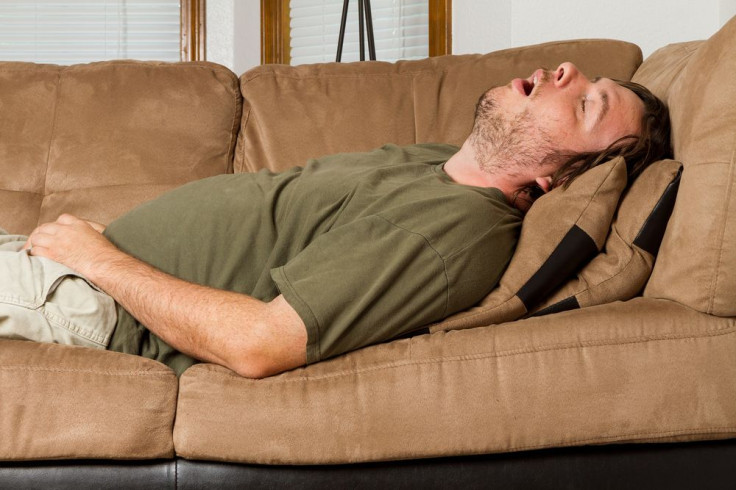Upper-Airway Electronic Stimulation Effective Alternative For Sleep Apnea Patients Who Can't Tolerate CPAP Therapy

Obstructive sleep apnea (OSA), the most common form of the sleep disorder affects an estimated 18 million Americans, with more than half of those suffering from the disorder being overweight. Now, a new form of treatment, upper-airway electronic stimulation, has shown effectiveness in helping a large portion of study participants get much-needed rest, without the uncomfortable masks or nose pieces that are currently used.
Current treatments, called continuous positive airway pressure (CPAP) therapy, involve masks or nose pieces that a person with OSA wears while they sleep. The mask connects to a machine, which sends a continuous stream of pressurized air to the patient, keeping their upper airway passages open just enough to prevent sleep apnea and snoring. The masks and nose pieces, however, can be clunky and uncomfortable, and sometimes, can induce claustrophobic feelings, caused by the mask’s straps.
Fortunately, researchers have found an alternative in a device called “Inspire.” The device is surgically implanted, and provides a therapy called upper airway stimulation. The device delivers mild electronic stimulation to the hypoglossal nerve, timing it to the breathing cycle, and preventing the muscles at the base of the tongue from collapsing and blocking the airway. Although it has not been approved by the Food and Drug Administration yet, it's expected to undergo a review soon.
The phase III study on the device’s safety, called the Stimulation Therapy for Apnea Reduction (The STAR Trial) study, found that the device was able to reduce the frequency of breathing interruptions — apnea or hypopnea events — by 68 percent, while also decreasing the number of times a person’s blood oxygen level dropped — as a result of those events — by 70 percent. This led to a 40 percent improvement in patients’ ability to stay awake during the day, HealthDay reported. The researchers proved that the stimulation was effective by taking 23 participants off therapy while keeping another 23 on it. Over the course of only one week, those who had been withdrawn saw a spike in apnea events, and reported more fatigue and snoring.
“This device is a first-of-its-kind therapy and has the potential to help the many people suffering from moderate to severe sleep apnea who are unable to use or cannot tolerate CPAP,” Dr. Kingman Strohl, senior author of the study and pulmonologist at University Hospitals Case Medical Center, said in a press release. “At a year following surgical implantation, patients experienced substantial decreases in the number of interruptions of sleep apnea, and improvements in symptoms of wake time sleepiness, snowing, and quality of life.”
The study included 126 participants — mostly men — who suffered from moderate to severe OSA and couldn’t tolerate CPAP therapy. All of the participants also had a body mass index of less than 32 (30 and up is considered obese) and showed signs that the source of their apnea was from the tongue level. “We intentionally recruited people who could not tolerate positive pressure — this is a group of patients who are very vulnerable for health outcomes left untreated,” said Dr. Patrick J. Strollo, of the division of pulmonary allergy and critical care medicine at the University of Pittsburgh, according to The Huffington Post.
Source: Strollo P, Soose R, Maurer J, et al. Upper-Airway Stimulation for Obstructive Sleep Apnea. NEJM. 2013.



























